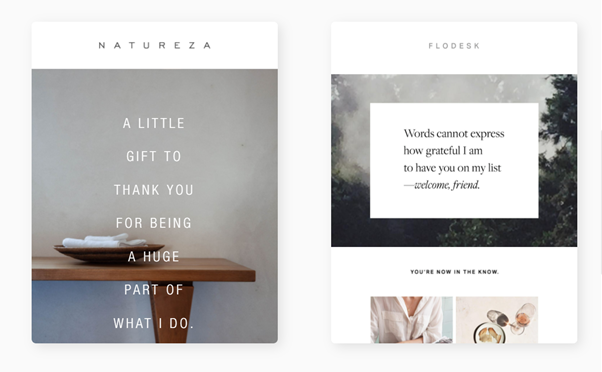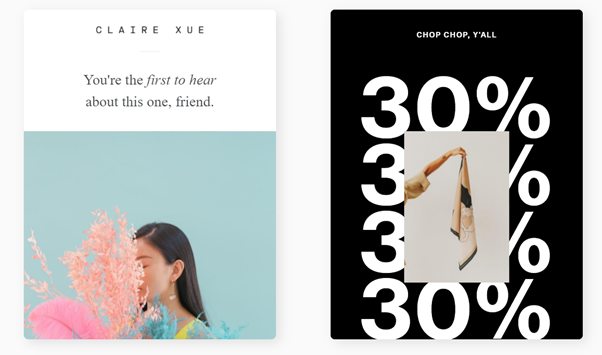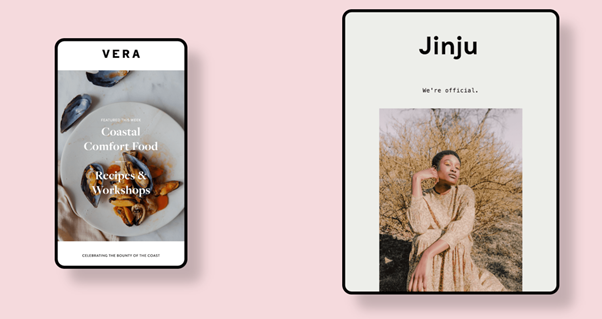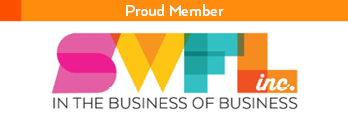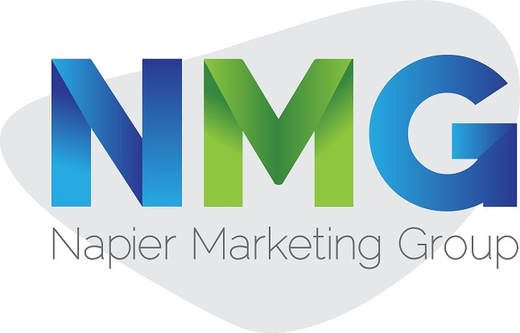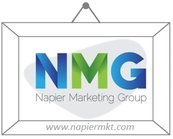9 Email Newsletter Tactics Your Small Business Can Start Today
Are you a small business owner who wants to increase visibility, revenue, and build better relationships with clients and potential customers? Then, you’re in the right place.
Many people believe that email newsletters are no longer effective, especially for small businesses.
This is simply not true.
Email marketing can actually improve your ROI and increase your authority without being all that expensive.
It is therefore an accessible and efficient marketing method for all types of businesses, regardless of their size and budget.
Thus, if you are now slightly more convinced to start using email marketing in your business, keep reading.
This article aims to list nine of the most effective email newsletter tactics your small business can use immediately.
So, let’s dive right in.
Benefits of starting an email newsletter strategy.
As mentioned in the introduction, there are many valid and convincing reasons that explain why email marketing is important for small businesses.
Among the most relevant benefits, it allows you to:
How to create a small business email newsletter strategy in 4 simple stepsGet started building your email listIt's obvious that you need contacts before sending any type of email.
If you want to achieve that, you need to create one or more newsletter signup forms and place them strategically on your website, social media profiles, and anywhere else they would be suitable.
Here are some tips for creating and customizing an attractive and working newsletter signup form:
https://www.youtube.com/watch?v=wYorMSvhI6k&t=70s
Choose what type of emails to send
Once you’ve started growing your email list, it’s now time to decide which type of emails you’d like to send.
The decision may largely vary based on the type of business you run. However, the following are the most common types of emails you can send:
If you’re short on ideas, check out some newsletter examples to get a sense of the types of emails you could send.
Organize your email design and content
Once you’ve decided which type of email you’d like to send to your list, it’s time to think about the email design and content.
Composing the email content
As for the content, you should segment your email list into smaller lists based on similar interests.
Hence, you will avoid sending mass emails to all of your contacts and being unsuccessful in your campaign.
For example, you can manage your email list and segment contacts by:
Setting up the email design
Email design will greatly affect the success of your marketing campaign. Hence, it's important to pay attention to it.
As a small business owner, you don't need to worry about presenting your newsletter subscribers with a perfect and expensive design.
Focus instead on a few important points, like these:
Send your emails and analyze the performance
After you've got everything in place and you're sure you're good at both content and design, you can just start sending emails.
After you send the emails, make sure to analyze their performance (open rate, click rate, unsubscribe rate, etc.).
By doing this, you can improve the ones you send out for your next email marketing campaign.
9 best tactics to make your email newsletter successful
As promised at the beginning of this article, you will find below the top email newsletter tactics your small business can implement today!
1. Use powerful subject lines.
When you open an email and see a new one in your inbox or receive a notification email, you usually glance at the subject line first. Depending on this, you decide to open the email or delete it immediately.
Usually, this happens to the majority.
Therefore, you can already guess how important the email subject is. Thus, you must develop a captivating and attention-grabbing message that can quickly grab the user's attention.
Although the subject line is crucial, the content should also be valuable and reflect what the headline promised.
2. Personalize your emails
Many people believe that email newsletters are no longer effective, especially for small businesses.
This is simply not true.
Email marketing can actually improve your ROI and increase your authority without being all that expensive.
It is therefore an accessible and efficient marketing method for all types of businesses, regardless of their size and budget.
Thus, if you are now slightly more convinced to start using email marketing in your business, keep reading.
This article aims to list nine of the most effective email newsletter tactics your small business can use immediately.
So, let’s dive right in.
Benefits of starting an email newsletter strategy.
As mentioned in the introduction, there are many valid and convincing reasons that explain why email marketing is important for small businesses.
Among the most relevant benefits, it allows you to:
- Increase website traffic
- Build brand loyalty
- Increase sales
- Build better relationships with your customers
- Enhance your analytics
- Generate more leads
- Promote products and services
How to create a small business email newsletter strategy in 4 simple stepsGet started building your email listIt's obvious that you need contacts before sending any type of email.
If you want to achieve that, you need to create one or more newsletter signup forms and place them strategically on your website, social media profiles, and anywhere else they would be suitable.
Here are some tips for creating and customizing an attractive and working newsletter signup form:
- Include just one call-to-action
- Use a good color scheme
- Offer immediate value (what is the benefit they receive from signing up for your newsletter and leaving their email address?)
- Don’t write too much information
- Don’t ask for too much personal information (possibly, require just the email)
https://www.youtube.com/watch?v=wYorMSvhI6k&t=70s
Choose what type of emails to send
Once you’ve started growing your email list, it’s now time to decide which type of emails you’d like to send.
The decision may largely vary based on the type of business you run. However, the following are the most common types of emails you can send:
- Promotional emails for special offers and sales
- Transactional emails (eCommerce receipts, notifications, etc.)
- Seasonal emails (mostly for holidays)
- Emails containing tips and informative content
If you’re short on ideas, check out some newsletter examples to get a sense of the types of emails you could send.
Organize your email design and content
Once you’ve decided which type of email you’d like to send to your list, it’s time to think about the email design and content.
Composing the email content
As for the content, you should segment your email list into smaller lists based on similar interests.
Hence, you will avoid sending mass emails to all of your contacts and being unsuccessful in your campaign.
For example, you can manage your email list and segment contacts by:
- Demographics
- Email engagement
- Brand loyalty
Setting up the email design
Email design will greatly affect the success of your marketing campaign. Hence, it's important to pay attention to it.
As a small business owner, you don't need to worry about presenting your newsletter subscribers with a perfect and expensive design.
Focus instead on a few important points, like these:
- Make sure colors and styles reflect your brand
- Include a very clear call-to-action
- Maintain a tidy and concise layout
Send your emails and analyze the performance
After you've got everything in place and you're sure you're good at both content and design, you can just start sending emails.
After you send the emails, make sure to analyze their performance (open rate, click rate, unsubscribe rate, etc.).
By doing this, you can improve the ones you send out for your next email marketing campaign.
9 best tactics to make your email newsletter successful
As promised at the beginning of this article, you will find below the top email newsletter tactics your small business can implement today!
1. Use powerful subject lines.
When you open an email and see a new one in your inbox or receive a notification email, you usually glance at the subject line first. Depending on this, you decide to open the email or delete it immediately.
Usually, this happens to the majority.
Therefore, you can already guess how important the email subject is. Thus, you must develop a captivating and attention-grabbing message that can quickly grab the user's attention.
Although the subject line is crucial, the content should also be valuable and reflect what the headline promised.
2. Personalize your emails
|
No one likes generic emails. As a result, they won't deliver the results you're looking for.
Thus, you should absolutely personalize your email marketing and make the recipients feel like they're the only ones receiving it. Make sure you address the recipient by name, include personalized messages (e.g., birthday wishes with a discount coupon), provide tips and tricks, and offer recommendations based on previous purchases or actions. During the personalization phase, it is very important to collect data from your newsletter subscribers and segment them accordingly. |
3. Include visuals
|
Today, lines and lines of texts are pretty boring and don't attract the user's attention at all.
This explains the importance of adding visuals to your emails. These can be images, GIFs, or even videos. The suggestion is to add an eye-catching image, but don't overdo it. Otherwise, your email might get flagged as spam. 4. Optimize your send time. Have you ever heard about send time optimization (STO)? It allows marketers to send emails at the optimal time for each contact. By looking at historical data of when contacts open their email, you can determine when is the optimal time to contact them. |
When you send emails at a time when users are most likely to open them, you will ensure a notable and positive difference in engagement.
5. Provide exclusive content
You can grow your email list significantly by providing exclusive content only to subscribers.
Just to make a few examples, if you have a blog, you can make some posts only available to registered subscribers, or provide daily tips, or offer exclusive digital products, like brochures, ebooks, and more.
6. Include third party content
Third-party content is exactly what it sounds like - content created by someone else.
You can effectively align your newsletter with your target audience by using third-party content from industry experts, partners, and influencers. You can also cross-promote your newsletter with vendors and nearby businesses that target the same audience.
If you don’t know where to find great third-party content, start by looking at industry publications. These could be newsletters, blogs, podcasts, videos, and reports that many people in your industry have heard of and regard highly.
7. Make your emails mobile-friendly
5. Provide exclusive content
You can grow your email list significantly by providing exclusive content only to subscribers.
Just to make a few examples, if you have a blog, you can make some posts only available to registered subscribers, or provide daily tips, or offer exclusive digital products, like brochures, ebooks, and more.
6. Include third party content
Third-party content is exactly what it sounds like - content created by someone else.
You can effectively align your newsletter with your target audience by using third-party content from industry experts, partners, and influencers. You can also cross-promote your newsletter with vendors and nearby businesses that target the same audience.
If you don’t know where to find great third-party content, start by looking at industry publications. These could be newsletters, blogs, podcasts, videos, and reports that many people in your industry have heard of and regard highly.
7. Make your emails mobile-friendly
|
Almost everyone now uses their mobile devices to do everything, including reading emails, and you probably are one of them.
Now, imagine opening an email and seeing unreadable paragraphs with tiny images. How would you react? Probably by turning back and deleting that email. This occurs when the email layout and content aren’t optimized for mobile devices. If you don't want your email campaign to fail and waste time creating content that nobody will read, then make sure that your emails are mobile-friendly. |
To achieve this, use a drag-and-drop email builder, such as Flodesk, that makes it easy to create emails that look great on any device.
8. Prioritize quality over quantity
Everyone dislikes being bombarded with many emails each day, especially if they are promotional only and provide no value.
Therefore, don't solely focus on quantity. Prioritize quality instead. Concentrate on giving value to your readers, and you might persuade them to take the specific action that reflects your business goal (website visit, purchase, etc.).
Knowing the subscriber's interests, customer journey, and actions taken can be very helpful to you in creating and sending the proper content at the right time.
9. Track, measure, optimize
It has already been mentioned a few times in this article, but it bears repeating: always measure, track, and optimize the performance of every email you send.
You can check out which content or call to action produced the best results, what send times worked best, which recipient segments liked what, and so on.
In more specific terms, keep track of the following KPIs: open rate, bounce rate, click-through rate (CTR), conversion rate, and unsubscribe rate.
By doing this, you'll be able to determine what works and what doesn't. In this way, you can reshape your email marketing strategy as necessary.
Conclusions
Here’s the end of this blog post about the best email newsletter tactics for your small business. Hopefully, you found it interesting and helpful.
You learned how to create an email marketing strategy and discovered some of the best tips to make it successful and grow your business.
I appreciate your time spent reading this article. If you’d like to learn more about email newsletter strategy, please visit Flodesk's blog. You can find great email marketing tips, guides, and examples there.
Everyone dislikes being bombarded with many emails each day, especially if they are promotional only and provide no value.
Therefore, don't solely focus on quantity. Prioritize quality instead. Concentrate on giving value to your readers, and you might persuade them to take the specific action that reflects your business goal (website visit, purchase, etc.).
Knowing the subscriber's interests, customer journey, and actions taken can be very helpful to you in creating and sending the proper content at the right time.
9. Track, measure, optimize
It has already been mentioned a few times in this article, but it bears repeating: always measure, track, and optimize the performance of every email you send.
You can check out which content or call to action produced the best results, what send times worked best, which recipient segments liked what, and so on.
In more specific terms, keep track of the following KPIs: open rate, bounce rate, click-through rate (CTR), conversion rate, and unsubscribe rate.
By doing this, you'll be able to determine what works and what doesn't. In this way, you can reshape your email marketing strategy as necessary.
Conclusions
Here’s the end of this blog post about the best email newsletter tactics for your small business. Hopefully, you found it interesting and helpful.
You learned how to create an email marketing strategy and discovered some of the best tips to make it successful and grow your business.
I appreciate your time spent reading this article. If you’d like to learn more about email newsletter strategy, please visit Flodesk's blog. You can find great email marketing tips, guides, and examples there.
